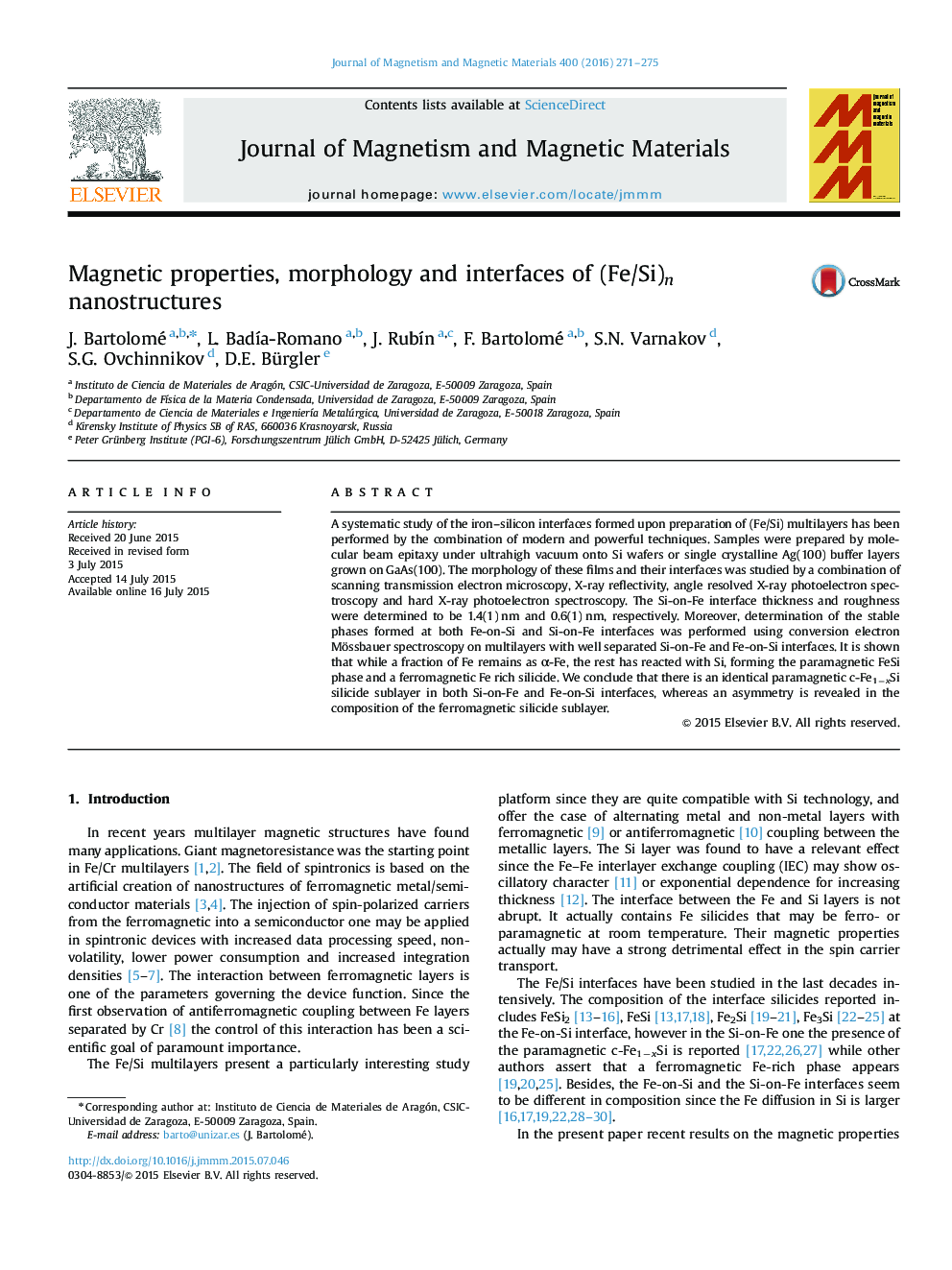| Article ID | Journal | Published Year | Pages | File Type |
|---|---|---|---|---|
| 1798421 | Journal of Magnetism and Magnetic Materials | 2016 | 5 Pages |
•The Si-on-Fe interface has a thickness of 1.4 nm and a roughness of 0.6 nm.•The para- c-Fe1-xSi and the ferromagnetic Fe1−xSix form the interfaces.•c-Fe1−xSi is symmetric and Fe1−xSix is asymmetric in Si/Fe and Fe/Si interfaces.•(Fe/Si)3 multilayers conserve their integrity just till T≈450 K.•Irreversible chemical transformations take place at high temperature.
A systematic study of the iron–silicon interfaces formed upon preparation of (Fe/Si) multilayers has been performed by the combination of modern and powerful techniques. Samples were prepared by molecular beam epitaxy under ultrahigh vacuum onto Si wafers or single crystalline Ag(100) buffer layers grown on GaAs(100). The morphology of these films and their interfaces was studied by a combination of scanning transmission electron microscopy, X-ray reflectivity, angle resolved X-ray photoelectron spectroscopy and hard X-ray photoelectron spectroscopy. The Si-on-Fe interface thickness and roughness were determined to be 1.4(1) nm and 0.6(1) nm, respectively. Moreover, determination of the stable phases formed at both Fe-on-Si and Si-on-Fe interfaces was performed using conversion electron Mössbauer spectroscopy on multilayers with well separated Si-on-Fe and Fe-on-Si interfaces. It is shown that while a fraction of Fe remains as α-Fe, the rest has reacted with Si, forming the paramagnetic FeSi phase and a ferromagnetic Fe rich silicide. We conclude that there is an identical paramagnetic c-Fe1−xSi silicide sublayer in both Si-on-Fe and Fe-on-Si interfaces, whereas an asymmetry is revealed in the composition of the ferromagnetic silicide sublayer.
